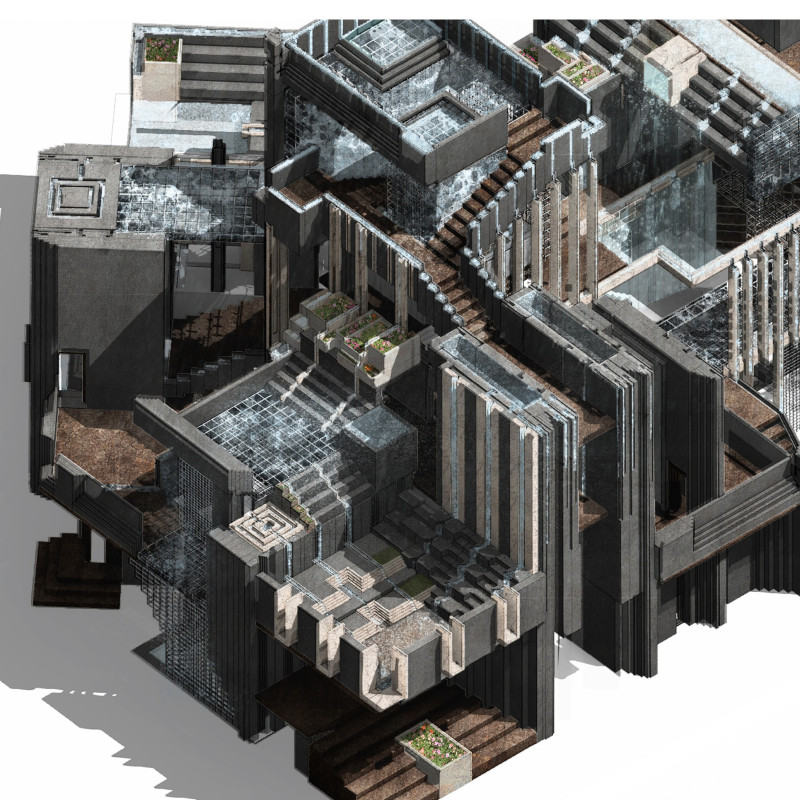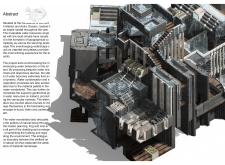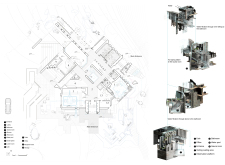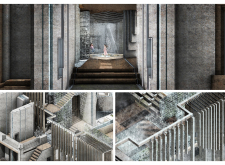5 key facts about this project
The project focuses on creating a harmonious connection with its surrounding environment. Central to the design is the strategic incorporation of water features throughout the structure. These elements not only provide aesthetic appeal but also serve practical functions, emphasizing the importance of water as a resource in Icelandic culture. The architectural choices reflect a commitment to blending indoor and outdoor spaces, allowing natural elements to permeate the structure.
Unique Integration of Water Features
A distinctive characteristic of this project is its integration of responsive water channels. These features are designed to manage both the condensation and evaporation of water, promoting efficient use of this essential resource. The channels play a significant role in the overall layout, creating a pathway for visitors and enhancing their interactions with the environment. These water elements are complemented by advanced filtration systems, ensuring cleanliness and functionality within recreational spaces such as pools and saunas.
Natural Material Utilization
The selection of materials for this project further sets it apart. Concrete, glass, steel, and natural stone have been employed strategically to create a cohesive aesthetic that aligns with the rugged landscape of Iceland. Concrete provides structural strength, while glass enhances visibility and light flow, creating inviting interior spaces. The use of local natural stone reinforces the connection with the environment, making the architecture a part of its geographical context.
Architectural Layout and User Experience
The layout of the project reflects a non-linear design, inviting exploration and discovery. Spaces are organized to encourage movement, with areas designed for both communal activities and solitary reflection. The design considers how users will navigate the site, integrating elements that enhance sensory experiences, such as sound from flowing water and visual connections to the outdoors.
The architectural strategies employed in this project emphasize sustainability without sacrificing user comfort. The interplay of structural integrity and environmental responsiveness defines this work, making it a valuable contribution to contemporary architecture in Iceland. For those interested in discovering more about the technical aspects of the project, including architectural plans, sections, and design methodologies, exploring the provided presentation can offer deeper insights into this innovative architectural endeavor.


























